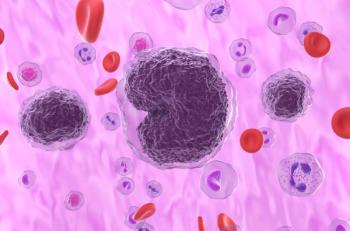
Topical Calcineurin Inhibitors for AD Not Associated With Cancer
Pimecrolimus and tacrolimus, 2 topical calcineurin inhibitors for the treatment of atopic dermatitis (AD), were not shown to increase the risk of cancer based on moderate-certainty evidence from a systematic review and meta-analysis.
Topical calcineurin inhibitors for the treatment of atopic dermatitis (AD) were not shown to increase the risk of cancer, according to study findings published recently in
AD is a chronic relapsing inflammatory skin condition that is prevalent in both children and adults. Topical corticosteroids serve as the first-line topical anti-inflammatory therapy for the disease, but evidence
Alternatively, topical emollient creams, such as pimecrolimus and tacrolimus, have been recommended for long-term AD stabilization among patients even when topical and/or systemic anti-inflammatory treatment is administered. These drugs aim to restore the skin barrier, but researchers note that a key unresolved safety concern regarding use of topical calcineurin inhibitors is whether it is associated with cancer.
As part of the 2022 American Academy of Allergy, Asthma, and Immunology and American College of Allergy, Asthma, and Immunology Joint Task Force on Practice Parameters AD guidelines, study authors conducted a systematic review and meta-analysis to examine the risk of cancer in patients with AD exposed to pimecrolimus or tacrolimus.
Data were derived from MEDLINE, Embase, the Latin American and Caribbean Health Sciences Literature database, the Índice Bibliográfico Espanhol de Ciências da Saúde database, the Global Resource of Eczema Trials database, the World Health Organization (WHO) International Clinical Trials Registry Platform, the FDA database, the European Medicines Agency database, company registers, and relevant citations from inception to June 6, 2022.
The analysis included randomized controlled trials and comparative and noncomparative nonrandomized studies in any language addressing cancer risk in patients with AD using topical calcineurin inhibitors.
Bayesian models were utilized to estimate the probability for cancer due to topical calcineurin inhibitor exposure and the GRADE approach was used to determine the certainty of the evidence. Patients, advocacy groups, and care providers were indicated to set a priori thresholds of important effects.
A total of 110 unique studies (52 randomized controlled trials and 69 nonrandomized studies [11 were nonrandomized study extensions of randomized controlled trials]) were included in the analysis, consisting of 3.4 million patients followed up for a mean of 11 months (range, 0.7-120 months).
Findings based on moderate certainty evidence in the meta-analysis showed that the absolute risk of any cancer with topical calcineurin inhibitor exposure was not different from controls (absolute risk, 4.70 per 1000 with topical calcineurin inhibitors vs 4.56 per 1000 without; odds ratio [OR], 1.03; 95% CI, 0.94-1.11).
Moreover, using data from observational studies and randomized controlled trials, the use of pimecrolimus (OR, 1.05; 95% CI, 0.94-1.15) or tacrolimus (OR, 0.99; 95% CI, 0.89-1.09) showed little to no association with cancer for all age groups compared with no topical calcineurin inhibitor exposure.
Between the 2 topical calcineurin inhibitors (pimecrolimus vs tacrolimus), association with cancer was similar (OR, 0.95; 95% CI, 0.83-1.07). Findings were also indicated to be similar in infants, children, and adults, and robust to trial sequential, subgroup, and sensitivity analyses.
“These findings support the safe use of topical calcineurin inhibitors in the optimal treatment of patients with AD,” concluded researchers.
Reference
Devasenapathy N, Chu A, Wong M, et al. Cancer risk with topical calcineurin inhibitors, pimecrolimus and tacrolimus, for atopic dermatitis: a systematic review and meta-analysis. Lancet Child Adolesc Health. Published online November 9, 2022. doi:10.1016/S2352-4642(22)00283-8
Newsletter
Stay ahead of policy, cost, and value—subscribe to AJMC for expert insights at the intersection of clinical care and health economics.













































